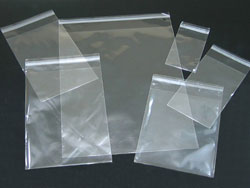As you have seen at the grocery store, bags are available in different shapes, colors and sizes, and some of them might be made of a different material. Besides cellophane, you may also find the following types of bags at your store:
- Paper bags
- Clothes bags
- Coir bags
- Leather bags
Different Cellophane Bags Misconceptions
All throughout the world, various environmental groups have been organizing campaigns through different sources in order to spread different misconceptions about cellophane bags. Many governments in other countrieshave taken the step of imposing a penalty for the use of cellophane bags by way of tax or imprisonment. Certainly, there are many misconceptions when it comes to the production and the use of different types of cellophane bags. Some of these misconceptions are:
Health hazard: Environmentalists say that cellophane bags are responsible for spreading many diseases, but it has been proven that cellophane bags are not harmful for humans or animals.
Suitable for one time use: This is not true – cellophane bags can be used several times. Many people use cellophane bags month after month to carry books andedibles, and those who have very large cellophane bags can use them to cover and pack their furniture.
Consumes more crude oil during manufacturing: Among several misconceptions about cellophane bags, the most prominent misconception is that plastics, which is the basic raw material for manufacture of cellophane bags, is responsible for the utilization of more crude oil which indirectly inflates the economy by an increase in oil prices. In particular, cellophane bags require less than 1% of oil consumption.
Not biodegradable: Another misconception about cellophane bags is that they arenon-biodegradable. In reality, the poor handling of unused cellophane bags is primarily responsible for this problem. Instead of throwing away the surplus bags, you may have the entire bundle of cellophane bags pooled together in different places where they can be recycled and converted into plastic containers and furniture.Nowadays, in many cities, unusable cellophane bags along with tar are used for road laying works.
Cellophane bags are prime sources of litter: When comparing cellophane bags to the large amount of litter pooled in cities, the presence of cellophane bags constitute only about 1% of the entire disaster. Certainly, it’s a typical desire to want to make sure that people don’t litter the streets when they are out shopping for the needs of their pets. Keep in mind that the majority of the pets use the street to defecate or urinate, and a lot of times they have been holding it for a while. It’s the responsibility of the City Administration to isolate cellophane bags while handling litter so that they can either be recycled or reused.
Proper Handling of Cellophane Bags
Many experts and manufacturers have concluded that the proper handling of unused cellophane bags will remove the misconceptions about cellophane bags to a great extent. In addition, many misconceptions about cellophane bags are found to be either fabricated or misguided without knowing the real facts. The following environment friendly cellophane bags are now made available in numerous markets and grocery stores around the United States:
- Compost bags
- Biodegradable
- Reusable
- Stock bags

- Home
- Benefits Of Cellophane Bags
- Biodegradable Cellophane Bags
- Bulk Cellophane Bags
- Buy Cellophane Bags
- Candy Cellophane Bags
- Cellophane Art Bags
- Cellophane Bags Faqs
- Cellophane Bags
- Cheap Cellophane Bags
- Compostable Cellophane Bags
- Considerations Cellophane Bags
- Cupcake Cellophane Bags
- Custom Cellophane Bags
- Custom Printed Cellophane Bags
- Customized Cellophane Bags
- Decorative Cellophane Bags
- Different Colors Of Cellophane Bags
- Different Shapes Of Cellophane Bags
- Different Sizes Of Cellophane Bags
- Disadvantages Of Cellophane Bags
- Discount Cellophane Bags
- Discovered It Cellophane Bags
- Expert Insight Into Cellophane Bags
- Facts About Cellophane Bags
- Features Of Cellophane Bags
- Function Of Cellophane Bags
- Gift Basket Cellophane Bags
- History Of The Cellophane Bags
- How Are Cellophane Bags Used
- Misconceptions About Cellophane Bags
- Party Cellophane Bags
- Paw Print Cellophane Bags
- Personalized Cellophane Bags
- Personalized Cellophane Candy Bags
- Plastic Cellophane Bags
- Polka Dot Cellophane Bags
- Potential Of Cellophane Bags
- Printed Cellophane Bags Wholesale
- Printed Cellophane Bags
- Resealable Cellophane Bags
- Sealable Cellophane Bags
- Self Adhesive Cellophane Bags
- Warning For Cellophane Bags
- What Are Cellophane Bags Used For
- When Are Cellophane Bags Used
- Where Are Cellophane Bags Used
- Where To Buy Cellophane Bags
- Who Invented The Cellophane Bag
- Wholesale Cellophane Bags
- Wholesale Cellophane Gift Bags
- Why Are Cellophane Bags Used
- Cellophane Bags
- Cellophane Bags For Occassions
- Clear Cellophane Bags
- Colored Cellophane Bags
- Cone Shaped Cellophane Bags
- Extra Large Cellophane Bags
- Food Cellophane Bags
- Large Cellophane Bags
- Small Cellophane Bags
- Types Of Cellophane Bags
- What Can Cellophane Bags Be Used For
